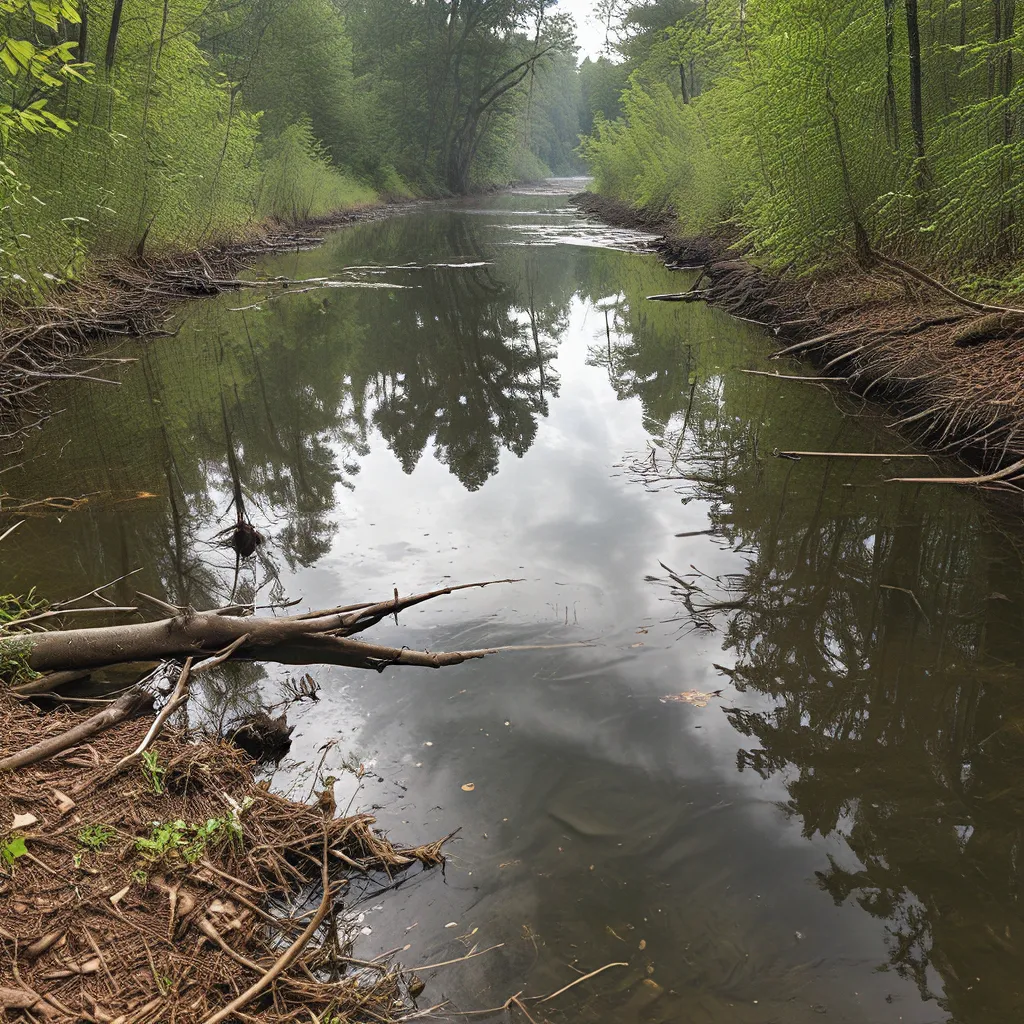
Unveiling the Hidden Dangers: The Alarming Truth About Wastewater Discharge
As an avid nature enthusiast, I’ve always been fascinated by the intricate web of life that thrives in our fragile freshwater ecosystems. From the serene rivers that meander through lush landscapes to the vibrant lakes teeming with diverse aquatic life, these delicate habitats are the lifeblood of our planet.
However, as I delve deeper into the topic, I’ve uncovered a deeply concerning issue that’s quietly threatening the very foundation of these precious environments – the discharge of untreated or inadequately treated wastewater. It’s a problem that extends far beyond just the immediate impact on the water bodies themselves, but one that has far-reaching consequences for the entire ecosystem, and ultimately, for human health and well-being.
Wastewater Discharge: The Silent Assassin
Wastewater discharge, as the name suggests, refers to the release of water contaminated with a wide range of pollutants into our freshwater systems. These pollutants can include organic matter, nutrients (primarily phosphorus and nitrogen), heavy metals, chemicals, and even disease-causing pathogens.
The sources of this wastewater discharge are varied and pervasive, stemming from domestic sewage, industrial processes, and agricultural runoff. Imagine the vast array of contaminants that can be flushed into our rivers, lakes, and groundwater – it’s a veritable cocktail of toxins that can wreak havoc on the delicate balance of these fragile ecosystems.
The Cascading Effects: Nutrient Pollution and Oxygen Depletion
One of the most insidious effects of wastewater discharge is the introduction of excessive nutrients, particularly nitrogen and phosphorus. These nutrients act as powerful fertilizers, triggering algal blooms that can quickly overtake the water bodies.
But the story doesn’t end there. As these dense algal blooms begin to decompose, they deplete the dissolved oxygen concentrations in the water, leading to oxygen-deprived conditions that are harmful to aquatic life, especially fish populations. It’s a vicious cycle that can ultimately result in the collapse of entire ecosystems.
According to recent research, this nutrient pollution and oxygen depletion can have devastating consequences for the biodiversity and ecological services provided by these precious habitats, including crucial wetlands.
A Cocktail of Toxins: The Dangers of Persistent Pollutants
But the threats posed by wastewater discharge don’t stop there. These contaminated waters also introduce a cocktail of toxic substances that can persist in the environment, compromising water quality and rendering it unfit for human consumption, irrigation, and recreational activities.
From heavy metals and toxic chemicals to pharmaceuticals and microplastics, the array of pollutants can accumulate in aquatic organisms, eventually making their way up the food chain and posing serious risks to human health.
As an avid angler, the thought of consuming fish tainted with these persistent pollutants is a sobering one. It’s a reminder that the health of our waterways is inextricably linked to our own well-being.
A Dire Threat to Human Health
The discharge of untreated wastewater poses a direct and immediate threat to human health. Pathogens such as bacteria, viruses, and parasites present in the wastewater can cause a wide range of waterborne diseases, including cholera, dysentery, and hepatitis.
Communities that rely on these contaminated water sources for drinking, bathing, and cooking are at an elevated risk of illness and disease outbreaks. It’s a public health crisis that can have far-reaching consequences, from individual suffering to the strain on healthcare systems.
A Call to Action: Sustainable Wastewater Management
The magnitude of the problem is undeniable, but the good news is that there are solutions within our reach. By prioritizing sustainable wastewater management practices and investing in appropriate treatment infrastructure, we can work towards a future where our freshwater resources are protected, our ecosystems are thriving, and our communities are safe and healthy.
One promising technology that has caught my eye is Phoslock, a pioneering adsorption technology that can effectively remove phosphorus from wastewater effluents. By targeting this critical nutrient, we can significantly reduce the risk of harmful algal blooms and the subsequent oxygen depletion that plagues our waterways.
But the responsibility doesn’t lie solely with technology and infrastructure – it’s also up to all of us to raise awareness, advocate for change, and adopt sustainable practices in our own lives. By working together, we can safeguard the future of our fragile ecosystems and ensure a clean, healthy, and resilient environment for generations to come.
Embracing the Unknown, Embracing Change
As I grapple with the complexities of this issue, I’m reminded that the challenges we face are not set in stone. There are ongoing research efforts and evolving perspectives that continue to shed light on the intricate web of interactions within these ecosystems.
Some experts believe that the impact of wastewater discharge may be even more far-reaching than we currently understand, and there is active debate around the long-term consequences and the most effective mitigation strategies.
But rather than being discouraged by the uncertainty, I choose to embrace it. The unknown is where the most exciting discoveries lie, and the willingness to adapt is what will ultimately lead us to sustainable solutions.
So, I invite you to join me on this journey of exploring the hidden dangers of wastewater discharge, challenging the status quo, and championing the protection of our precious freshwater ecosystems. Together, we can create a cleaner, healthier, and more resilient future for all.